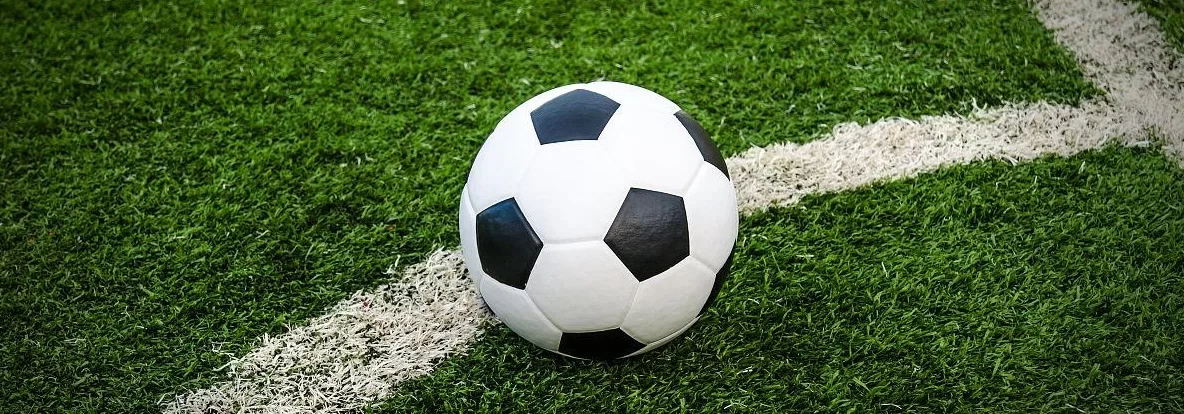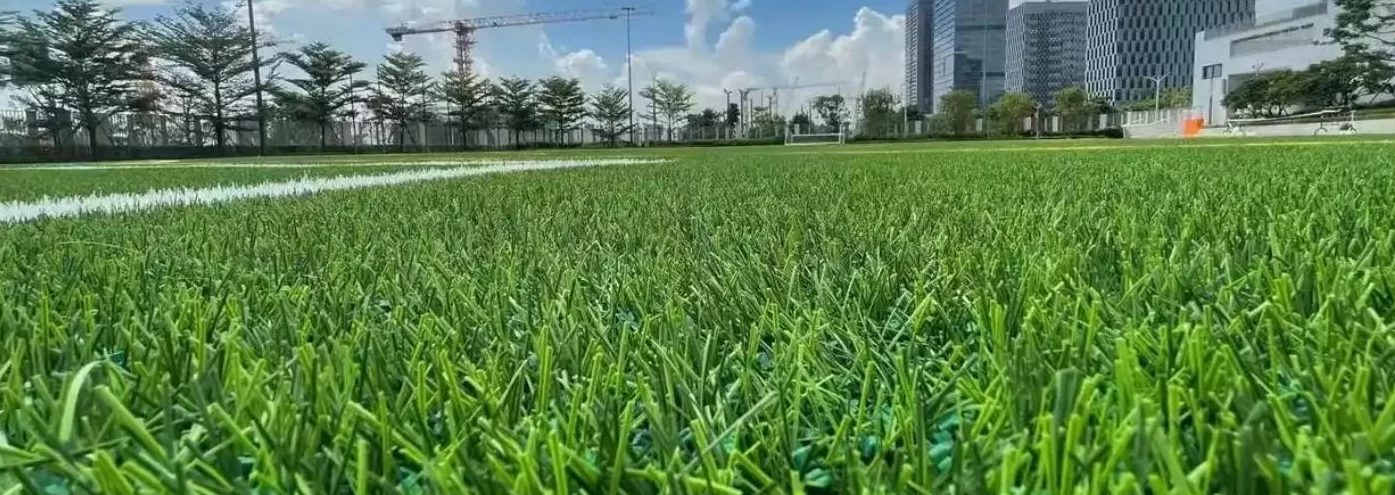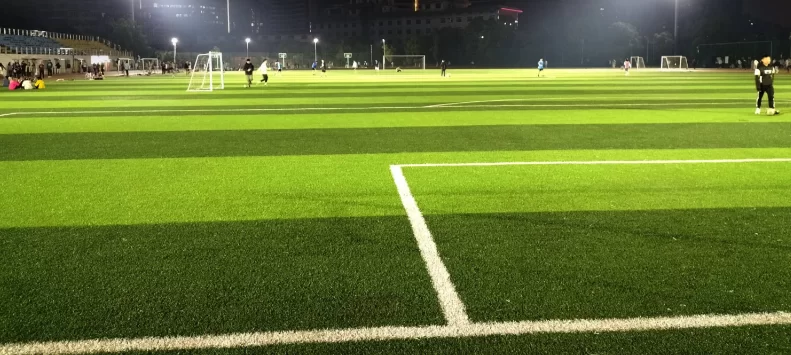16 September 2025
The landscape of football infrastructure is undergoing a significant transformation, driven by advancements in artificial turf technology. Modern artificial football ground solutions are increasingly being adopted across professional, semi-professional, and recreational sectors due to their inherent durability, consistent performance, and reduced maintenance demands. This shift is not merely about replicating natural grass but about engineering superior playing surfaces that can withstand intensive use while providing optimal player safety and ball dynamics. As a leading professional manufacturer of artificial soccer grass, XYGrass is at the forefront of this innovation, adhering to high standards from raw material selection to production processes, committed to providing premium solutions for various soccer fields.
Key industry trends point towards further integration of smart technologies, enhanced material composites, and sustainable manufacturing practices for artificial football pitches. Innovations in fiber extrusion, backing materials, and infill systems are leading to surfaces that more closely mimic the shock absorption and shear resistance of natural grass, reducing injury risks and enhancing player comfort. The demand for multi-sport capabilities on a single artificial football ground also influences design, requiring versatility without compromising specialized performance. XYGrass's commitment is to not only meet these evolving demands but to set new benchmarks in quality and playability for every artificial grass football stadium project.

Understanding the technical specifications is crucial when selecting an artificial grass football pitch. These parameters directly influence performance, durability, and player experience. Our Football Grass (FG50) product line exemplifies advanced engineering, ensuring optimal playability and longevity for any artificial football ground. Key metrics include pile height, Dtex, gauge, stitch rate, backing material, and infill system.
General Parameters for Advanced Artificial Football Grounds | ||
Parameter | Description | Typical Range/Value |
Pile Height | Length of the grass fibers above the backing. | 40mm – 60mm |
Dtex (Decitex) | Weight in grams of 10,000 meters of yarn. Higher Dtex indicates thicker, more durable fibers. | 8,000 – 15,000 Dtex |
Gauge | Distance between stitch lines (rows) of turf. | 3/4 inch, 5/8 inch |
Stitch Rate | Number of stitches per 10cm of length. Higher rate means denser turf. | 160 – 200 stitches/m |
Backing Material | The fabric that holds the turf fibers in place. | PP + Net (Primary), SBR Latex/PU (Secondary) |
Infill Type | Granular material placed between fibers to provide cushioning and ballast. | Rubber (SBR/EPDM), Silica Sand, Organic (TPE/Cork) |
Total Weight | Overall weight of the turf per square meter. | 2.5 – 4.5 kg/sqm |
UV Stability | Resistance to degradation from ultraviolet light exposure. | >8,000 hours (Xenon Arc Weatherometer) |
These specifications are carefully engineered to meet international standards such as FIFA Quality Pro, ensuring that the artificial football pitches deliver consistent ball roll, excellent shock absorption, and high wear resistance. The right combination of these elements ensures a premium playing experience, whether for a competitive artificial grass football stadium or a local training facility.
The production of high-quality artificial football pitches involves a meticulous multi-stage process designed to ensure durability, performance, and aesthetic appeal. At XYGrass, our process for Football Grass (FG50) begins with the selection of premium raw materials, primarily polyethylene (PE) or polypropylene (PP) polymers, chosen for their resilience, UV stability, and soft texture. This rigorous material selection underpins the quality of every artificial football ground we produce.
· Yarn Extrusion: High-grade polymers are extruded into synthetic fibers. This process dictates the fiber's cross-section, Dtex, and color, which collectively determine the performance characteristics of the artificial grass football pitch. Advanced extrusion techniques ensure consistent fiber thickness and strength.
· Tufting: The extruded yarns are precisely tufted into a primary backing cloth, typically made of woven polypropylene. Our state-of-the-art tufting machines ensure uniform stitch rates and pile heights, crucial for consistent ball roll and player interaction on the artificial football ground.
· Coating: After tufting, the primary backing is coated with a secondary backing material, usually SBR latex or polyurethane (PU). This coating permanently locks the fibers in place, providing dimensional stability and enhancing tear resistance. This step is critical for the longevity of an artificial grass football stadium.
· Drying & Curing: The coated turf undergoes a controlled drying and curing process to solidify the backing adhesive, ensuring maximum bond strength and durability.
· Inspection & Quality Control: Every roll of artificial grass football ground is subjected to rigorous quality checks. This includes measuring pile height, Dtex, stitch rate, tuft bind strength, drainage rate, and UV stability. Our adherence to ISO 9001:2015 standards guarantees product excellence.
· Rolling & Packaging: Once approved, the finished turf is rolled onto cores and carefully packaged for transport, ready for installation.

Conceptual Diagram: The multi-stage manufacturing process ensures the structural integrity and performance of XYGrass Football Grass (FG50).
This controlled process ensures that our artificial football pitches consistently meet and exceed expectations for performance and durability. With an expected service life of 8-15 years, our solutions provide an excellent return on investment for sports facilities and municipal projects worldwide. The enhanced drainage capabilities, for example, minimize downtime after rain, a crucial advantage over natural grass.
XYGrass Football Grass (FG50) is engineered for a diverse range of applications where a high-performance artificial football ground is required. Its robust construction and advanced fiber technology make it ideal for professional stadiums, training centers, municipal sports complexes, school playing fields, and even private sports academies. The versatility of our artificial football pitches ensures consistent performance across various climates and intensity levels of use.
· Exceptional Durability: Engineered with high Dtex monofilament fibers, FG50 resists wear and tear from intensive play, outperforming many natural grass fields in terms of playable hours. This translates to significantly longer lifespan for an artificial grass football pitch.
· All-Weather Playability: Superior drainage and UV stability mean FG50 remains playable year-round, regardless of adverse weather conditions, eliminating mud, puddles, and sun-faded patches often seen on natural artificial football ground surfaces.
· Low Maintenance: Significantly reduces costs associated with watering, mowing, fertilizing, and pest control. This advantage makes artificial football pitches a more economical long-term solution.
· Consistent Performance: Provides a uniform playing surface with predictable ball roll and bounce, crucial for player development and high-level competition. The consistent shock absorption also contributes to player safety.
· Player Safety & Comfort: Optimized infill systems and resilient fibers offer excellent shock absorption, reducing the impact on joints and minimizing the risk of friction burns, creating a safer artificial grass football stadium environment.
· Environmental Sustainability: Reduces water consumption, eliminates the need for pesticides and fertilizers, and can be made from recycled materials, contributing to a greener footprint for any artificial grass football ground project.
For instance, a major university in Europe recently upgraded its training facilities with XYGrass FG50, reporting a 30% increase in usable field hours per week and a notable reduction in student-athlete minor injuries, highlighting the practical benefits of a premium artificial grass football pitch.

Our Football Grass (FG50) is specifically designed to meet the rigorous demands of competitive football, ensuring a high-performance artificial grass football ground that stands the test of time. Below is a detailed breakdown of its key technical indicators, presented in a format that allows for easy comparison and understanding of its superior attributes.
XYGrass Football Grass (FG50) Key Technical Specifications | ||
Parameter | FG50 Specification | Industry Standard (FIFA Quality Pro) |
Yarn Type | Monofilament PE, Diamond shape | Monofilament/Fibrillated PE |
Pile Height | 50 mm | 40-65 mm |
Dtex | 12,000 Dtex | >8,000 Dtex |
Gauge | 3/4 inch | 3/4, 5/8, 3/8 inch |
Stitch Rate | 200 stitches/m | 160-200 stitches/m |
Total Yarn Weight | 1200 g/sqm (±5%) | Variable, typically 1000-1500 g/sqm |
Backing | PP Woven Cloth + SBR Latex | PP/PET + SBR/PU |
Tuft Bind | >40 N | >30 N (FIFA Quality) |
Drainage Rate | >1000 mm/hr | >600 mm/hr (FIFA Quality) |
UV Stability | DIN 53387 >10,000 hours | DIN 53387 >6,000 hours |
The detailed parameters above illustrate why FG50 is a top-tier choice for any artificial football ground. Its high Dtex and superior tuft bind strength contribute directly to its exceptional longevity and resistance to fiber degradation, ensuring an extended lifespan for your artificial grass football pitch. The drainage rate far exceeds industry standards, guaranteeing playability even after heavy rainfall, preventing facility downtime and ensuring continuous use of the artificial grass football stadium.

To further illustrate the superior performance of XYGrass FG50, consider the following conceptual data visualizations, which represent our rigorous internal testing and independent laboratory results.
(Imagine a bar chart here showing FG50 with significantly higher wear resistance, e.g., 20% more playable hours or less fiber loss after a simulated abrasion test, compared to a generic standard artificial turf. This highlights the robust nature of FG50's fibers and backing for an artificial football ground.)
Data Point (Conceptual): FG50 exhibits 85% fiber retention after 20,000 Lisport cycles, compared to 65% for standard turf.
(Picture a pie chart depicting the breakdown of annual operational costs for a football field. One slice for FG50 representing minimal maintenance (e.g., 10-15% of total), versus larger slices for natural grass representing significant expenses for watering, mowing, fertilization, and repair (e.g., 85-90%). This emphasizes the economic benefit of an artificial grass football pitch.)
Data Point (Conceptual): Annual maintenance costs for FG50 are approximately 15% of those for an equivalent natural grass pitch.
(Visualize a line graph showing the consistency of ball roll (e.g., measured in meters) for FG50 over several years of use, showing a stable line, contrasting with a natural grass field where consistency might fluctuate significantly with season and wear. This highlights the predictable performance of an artificial grass football ground.)
Data Point (Conceptual): Ball roll distance variation for FG50 remains within ±5% over 5 years, compared to ±20% for natural turf.
These conceptual visualizations represent the tangible benefits of choosing XYGrass FG50, emphasizing its long-term value, reduced operational burden, and consistent high-level performance for any artificial grass football ball game.
Recognizing that every artificial football ground project has unique requirements, XYGrass offers comprehensive customized solutions. Our team of experts works closely with clients to design and implement artificial football pitches that precisely match their specific needs, whether it's for a professional artificial grass football stadium or a community recreation area. This includes advising on optimal pile height, infill types (such as crumb rubber, TPE, or organic options), shock pad integration, and base construction to meet desired performance and budget.
A prominent regional sports complex faced challenges with its aging natural grass fields, including high maintenance costs, frequent closures due to weather, and inconsistent playing surfaces. After extensive consultation, XYGrass provided a tailored solution featuring our FG50 turf, installed over an advanced shock pad system and a dynamic stone base. The project encompassed two full-sized artificial football pitches, replacing existing natural grass, along with a smaller training area.
· Solution: XYGrass FG50 (50mm pile height, 12,000 Dtex) with a blend of SBR crumb rubber and silica sand infill, complemented by a 15mm shock pad for enhanced G-max (shock absorption).
· Results: The complex reported a 150% increase in field utilization, allowing for continuous training and competitive matches regardless of weather. Maintenance costs were reduced by 70%, and player feedback highlighted improved consistency and reduced injury perception. The artificial grass football ground quickly became a favored venue in the region.

An operational artificial grass football stadium demonstrating superior playability and aesthetic appeal.
This case illustrates XYGrass's ability to deliver tailored, high-performance artificial football ground solutions that address specific client challenges and achieve measurable positive outcomes, reinforcing our reputation as a trusted partner in sports infrastructure development.
A: Dtex (Decitex) is a unit of measurement that indicates the linear mass density of a yarn, specifically the weight in grams of 10,000 meters of that yarn. For artificial football pitches, a higher Dtex value (e.g., 12,000 Dtex for FG50) signifies thicker, more robust, and ultimately more durable individual fibers. This directly translates to greater resilience against wear, better vertical recovery, and an extended lifespan for the artificial grass football ground, especially under heavy usage.
A: Common infill materials include silica sand (for ballast and fiber support) and rubber granules (SBR, EPDM, TPE, or organic options like cork/coconut fiber). Rubber infills provide critical shock absorption, energy restitution, and help keep the fibers upright. Organic infills offer an eco-friendly alternative with excellent cooling properties. The right infill system is vital for player comfort, safety, and ball interaction on an artificial grass football ground.
A: Pile height, the length of the grass fibers, significantly influences playability. For football, typical pile heights range from 40mm to 60mm. A longer pile provides more cushioning and better infill retention, contributing to enhanced player safety and a more natural feel for the artificial grass football ball. Shorter piles might be more suitable for multi-sport use or areas requiring extremely fast ball roll.
A: Proper installation is paramount. Key standards involve base preparation (ensuring a stable, level, and well-draining sub-base), correct seaming of turf rolls, precise infill application (ensuring uniform depth), and line marking. Adherence to FIFA Quality Programme guidelines or local sports governing body standards is essential to guarantee optimal performance and safety for any artificial grass football stadium.
A: XYGrass Football Grass (FG50) is designed for exceptional durability, with an expected service life of 8-15 years, depending on usage intensity and maintenance. We offer an industry-leading warranty (e.g., 8-10 years) covering UV degradation and manufacturing defects, providing our clients with peace of mind for their artificial football pitches investment.
A: The delivery cycle for artificial football ground projects varies based on scale, customization, and geographic location. Typically, after order confirmation, turf manufacturing takes 1-2 weeks. Shipping can take an additional 2-8 weeks. XYGrass provides detailed project timelines and logistics support to ensure timely delivery and efficient installation of your artificial grass football pitch.
A: XYGrass offers comprehensive post-installation support, including maintenance guidelines, troubleshooting assistance, and access to our technical support team. We also provide recommendations for periodic professional maintenance services to maximize the lifespan and performance of your artificial football ground, ensuring your investment remains in top condition for years to come.

The information presented herein is underpinned by extensive research and adherence to industry-leading standards in artificial turf technology. For further in-depth analysis and technical specifications, refer to the following authoritative sources:
1. FIFA Quality Programme for Football Turf Handbook. The official guidelines and testing standards for artificial football pitches.
2. European Standard EN 15330-1: Surfaces for sports areas – Synthetic turf surfaces for outdoor sports use – Part 1: Specification for synthetic turf for football, hockey, rugby and tennis.
3. International Organization for Standardization (ISO) 9001:2015 – Quality management systems – Requirements. Applicable to the manufacturing processes of artificial grass football ground.
Hit enter to search or ESC to close